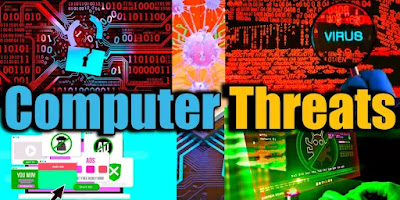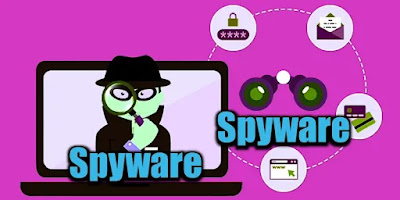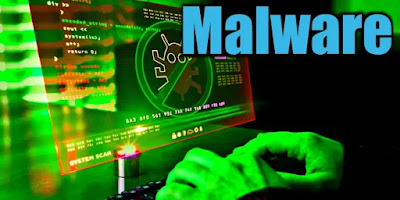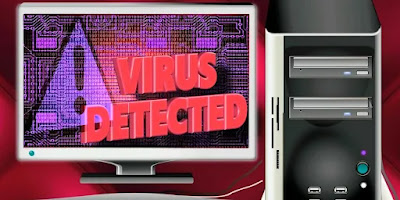A computer threat is an adverse effect on a computing device, caused by an attacker with malicious intent, or resulting from inappropriate system use. Threats can be carried out remotely, via telephone lines, or through physical access to the computer system. Examples of such threats include computer viruses, malware, spyware and adware. The term "threat" may also refer to intentional actions by people that are designed to compromise information security for some reason (e.g., industrial espionage or sabotage).
{tocify} $title={Table of Contents}
1. Computer Viruses
Computer viruses are pieces of code that are written by hackers to disrupt computer systems, such as stealing personal information, corrupting data, and destroying files. The main danger of computer viruses is that they can be transmitted from one computer to another via removable media such as USB sticks, CDs, and DVDs.Downloading or installing malware onto a machine can make it difficult (if not impossible) for the user to access the information on their computer. Malware can also damage or even completely shut down a computer’s operating system.
Some types of computer viruses can affect any computer regardless of operating system. For example, the names of some viruses include Coca-Cola Full Lock, Descriptis, and MacLock. It is important to note that viruses are not limited to damaging or stopping a computer from accessing essential system data; they can also damage or completely shut down a machine’s hardware.
Computer viruses and malware can even affect the way a person views the internet or interact with internet-based sites. For example, black and gray hat hackers use computer viruses and malware to knock over ad networks, alter search results, spread malware, or attack sites that provide affiliate or affiliate traffic. Using VirusesAs you can probably predict, viruses do not have a happy ending. Once a hacker infects and subsequently locks a computer, they have largely disrupted a computer system to the point that access is impossible. Most hackers will stop once the target computer has been rendered unbootable.
Once the virus-infected PC has been unsuccessfully removed, the lone hacker will typically delete the virus on their computer and leave the area. Disinfection methods performed by the CDC (Centers for Disease Control and Prevention) include cleaning the computer thoroughly with disinfectants and cleaning software. They study how viruses are transferred from one person to another, and then use this data to create vaccines. For example, the CDC claims that many vaccines contain smaller amounts of many viruses, which is why it can take two or three doses of the same vaccine to effectively and safely prevent colds.
2. Computer Worms
A computer worm is a self-replicating computer program that uses a computer network to send copies of itself to other computers. Unlike viruses and most other malware, computer worms do not need to attach themselves to an existing program. They can propagate themselves completely independently, and are among the most common and disruptive of malware.
2. Persistent Browser Hacks Persistent browser hacks allow a hacker to persist across many different webpages and programs, so the infection is hard to notice or remove. These types of browser hijacks can damage users’ privacy and security, while also increasing the potential for identity theft.
Read More Details: 5 Injured Gadgets You Can Still Fix
3. Spyware
Spyware is software that runs hidden on your computer and sends information about you to third parties. 2. So you can Spyware is software that you (or the company) don’t want other people to have access to, or perhaps see the settings or webpages of. Spyware doesn’t necessarily require additional software to install and run, like other types of malware does.
Note: There is a difference between warning messages and actual signs of a program providing malicious files and data. Flash (a type of human-readable code that can run in your browser) often includes a “Spyware” or “Adware” warning on page that you visit.
While this will usually provide you the choice to click a button to close the window or go to all sites with this kind of warning, it may do more harm than good. Spyware and other forms of adware affect people’s access to websites and online services. Ads can help webpages load faster, meaning you see more ads. But ads don’t provide value to you beyond loading more content. Spyware and other adware may alter your internet browser settings or screen certain pages with malicious code.
Also, there is a difference between a “Ad” or “Advertising” that appears in a webpage and a “Spyware”. For more information, please refer to Google’s definition. The act/temptation can be to fall for these types of scams and fall for an installed spyware as well. This is because the hired help is very good at convincing you to download additional programs off a website. This can be a quick way to set up your new hidden spyware and adware. If opponent is quick to respond and you click through to continue downloading, of course, you fall for the scam. The problem is that it’s usually easier to trick you into downloading and installing spyware than to actually spot spyware on your computer.
4. Malware
Malware is a type of software that’s designed to damage or disable computers and computer systems. Malware comes in many different forms, such as viruses, worms, and Trojan horses, but the most dangerous kind is spyware. Spyware is malware that’s installed on your computer without your knowledge to monitor your activities.
2. Only 10% of Office Viruses are really harmful. Your workplace computer is probably safe from viruses if it’s upgraded to a certification-ready version such as Windows 10 Home or Windows 10 Professional. However, viruses are much more harmful to your work from home computer if it hasn’t been upgraded. Basically, if you have a desktop PC or laptop and you use it for work from home, you can be at risk for malware.
3. There aren’t that many ways spyware attacks your computer. Spyware is quite rare, and you can protect your computer from it by not clicking on links that ask you to visit a website not authorized by your work email address. Also, find out if a website asks you to update your software or download new updates even though you don’t need them.
4. Antivirus software is essential because 99% of computers contain malware these days. However, Antivirus is also a pain in the behind because it’s so easy to get tricked into installing an unwanted piece of malware yourself.
One trick that will save you a lot of headache and pain is to search alternatives such as Google Safe Browsing or Microsoft Safe Mode. For more detailed information about how to hide malicious sites, see our article on 5 Ways To Hide Dangerous Webpages.
5. Set up home networking. If you own a home networking device and you want to make it easier for people to connect to your network to access your work or your team’s files, then you have to set up your home network. Usually, home networking devices will do this for you automatically.
5. Adware
Adware is software that displays advertisements to users while they are browsing the Internet. It’s usually installed onto a computer without the user’s knowledge, either through bundling with other software, or through exploiting security vulnerabilities.
Although adware can be harmless, you should avoid installing any adware onto your computer. Adware can include a variety of different programs. Bad Ads, Pagerank Density, and Avatar Toolbar for example are the most common types of malware on the Internet.
The main types of adware include: . Anti-Social Gadget Malware Bad Social Gadget is virus campaign designed to prevent users from visiting other websites. It works by automatically injecting pop up ads on sites visited by the targeted user when they have arrived at the site. The leaderboard ad becomes the middle of the page, whereas other ads are positioned beneath it.
The leaderboard ad that appears below the fold above the fold ad for Pagerank density. Adware installation and the associated Bad Social Gadget can cause your site to be unusable as the users will never see a response from you. Typically, seven types of random yet directed links will appear for a user who visits a randomly selected page on your site, which can dramatically impact your website’s traffic and conversions.
Pagerank Density Malware Pagerank Density is another type of malicious adware that replaces the normal 100 red link with a 503 server response when a user accesses a site targeted towards a particular IP address. This type of malicious adware can cause the 404 server response to be generated even if the user has visited the site before. Focusing solely on pagerank Density is a very hazardous approach because it leaves nothing to do but wait for someone with a good connection to your website to arrive at their IP address and download your potentially malicious software.












0 Comments